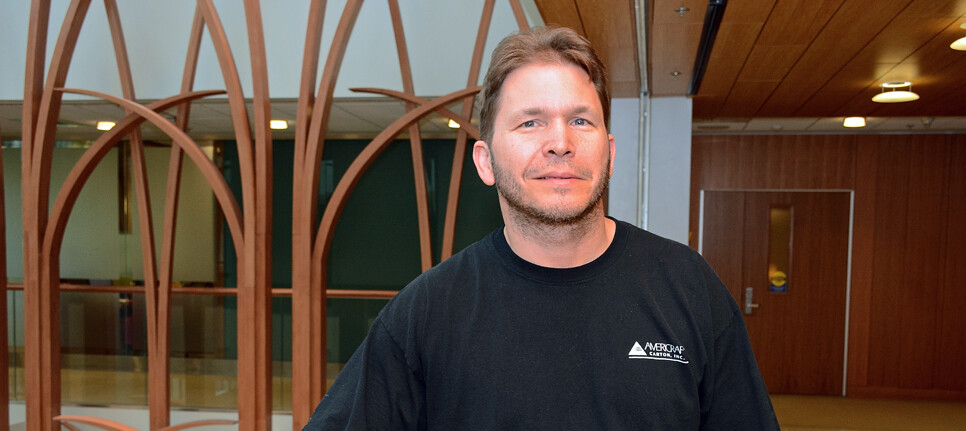Gerald Madren was a 29-year-old newlywed when he was diagnosed with leukemia in 1997. Nearly 18 years later, he’s cancer free, thanks to a stem cell transplant at Duke. The program is celebrating its 30th anniversary and 5,000th adult bone marrow transplant in June, 2015.
When Madren of Thomasville, NC, was first diagnosed with leukemia, his doctors told him it could take up to 10 years before the disease became full blown. Within only one year, Madren recalled, “I was pretty sick – bruised from head to toe and jaundice. I was admitted to Duke only a few months after my diagnosis.”
Stem Cell Transplant put Leukemia Into Remission
Chronic myelogenous leukemia is an uncommon type of blood cancer that can cause spontaneous bleeding, bruising, fatigue, fever, pale skin and night sweats. While the cancer tends to progress slowly and typically affects older adults, it hit Madren early and spread rapidly.
Duke cancer specialists combined chemotherapy with blood and platelet transfusions to put Madren’s cancer into remission. However, it wasn’t long before the off-set printing pressman was back in the hospital trying to cope with his cancer and the effects of his treatment.
“I was getting blood and platelets daily,” he said. “I had no immune system, and I weighed just 110 pounds." Looks were important to the amateur body builder, but Madren said, "I couldn’t work out anymore. Once I lost the weight, there wasn’t much I could do. Everything was out of my control.”
Madren needed a stem cell transplant to put his cancer in remission for good, Stem cell transplants can replace stem cells that are killed or damaged by the higher doses of chemotherapy needed to treat some aggressive cancers. These transplants allow cancer specialists to use much higher doses of chemo to eliminate cancer cells.
Life is Good
Madren spent nearly one year recuperating from the stem cell transplant and waiting for his immune system to be restored. Now, 18 years later, Madren remains cancer free.
“Thanks to my great care team at Duke, my wonderful wife, family and friends, and, of course, God, I’m here today,” said Madren. “Life is good.”
Celebrating 30 years, 5,000 transplants
Internationally recognized for its novel approaches to treating leukemia, lymphoma and multiple myeloma, the Duke’s Adult Bone Marrow Transplant (ABMT) Program celebrates its 30th anniversary this month. The program, which performs about 300 transplants annually, is expected to administer its 5,000th transplant by June 30, 2015.
“Our program was the first in the nation to begin outpatient stem cell transplantation,” said Nelson Chao, MD, chief of Duke's division of hematologic malignancies and cellular therapy. “We were also one of the first to develop cord blood transplantations for adults.
What the Future Will Bring
Moving forward, Chao said the division will work to reduce complications from graft versus host disease, a common complication following a stem cell or bone marrow transplant.
“Over the next few years we will also work to increase access for patients in need of transplantation,” Chao added. “Decreasing morbidity, or incidences of disease, is also a primary objective.”






